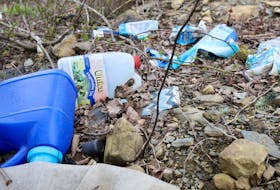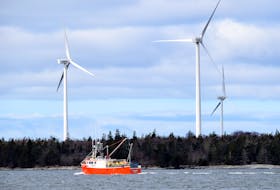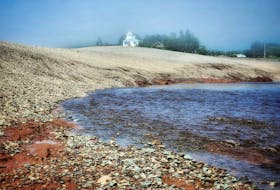AMHERST SHORE, N.S. – Outdoor enthusiasts recently bio-blitzed the Amherst Shore “Provincial Park salt marsh.
“We’re amateur naturalists and we like getting out to new places to see the natural history,” said Wendy McDonald, who traveled from Halifax with her husband Bob to take part in the bio-blitz. “We saw a kingfisher coming down the watershed there, and we saw chickadees, yellow legs, blue jays, and the dragonflies are busy as well.”
The McDonald’s wrote down what species they encountered and submitted it to the Clean Foundation, the host of the bio-blitz.
That data will be catalogued as part the Northumberland Strait Coastal Restoration Project, funded by the Department of Fisheries and Oceans.
The five-year project involves identifying, restoring and monitoring salt marsh habitat.
“The goal is to restore 15 hectares of salt marsh somewhere along the Northumberland Strait, and so this is an engagement activity to make people aware of the project and to have the community come and collect data for us,” said Charlynne Robertson, lead for the Northumberland Strait Coastal Restoration Project. “We’re doing an inventory of salt marsh habitats on the North Shore and, through that, we want to narrow down and pick some candidate sites that we can work to restore.”
Up to 80 per cent of salt marshes in Nova Scotia have, historically, been destroyed by farmland and roads which have created tidal restrictions through salt marshes.
“Whenever you have a road that passes through a salt marsh and the culverts under the road are undersized or positioned incorrectly it can mean salt water isn’t getting up into the system the way it naturally wants to, so it can restrict where the salt marsh can develop and how well it can develop,” said Logan Horrocks, restoration assistant with the Clean Foundation.
Community engagement is an important part of the restoration project.
Merydie Ross is a community engagement specialist with the Clean Foundation working out of Millbrook, Nova Scotia.
Ross works in partnership with the Mi’kmaq conservation group, which is part of the Mi’kmaq Confederacy.
“We’re gathering information from the public about salt marshes in the region, community knowledge and traditional knowledge, about species composition and distribution,” said Ross.
As the project continues, the Clean Foundation will develop volunteer opportunities to engage the public in hands-on work during the actual saltmarsh restoration.
Guided tours of the Amherst Shore salt marsh were part of the bio-blitz.
Restoration specialist Allen Beck was one of those guides.
“The Northumberland Strait itself is a very unique system. It’s got really warm waters and has an abundance of saltmarshes you don’t see along, let’s say, the eastern shore of Nova Scotia,” said Beck. “So, we tend to get a lot of species here that you don’t find until you get much further south into the states.”
The saltmarshes along the Northumberland Strait are also much different than the ones found along the Bay of Fundy.
“You don’t get bivalves or filter feeders in the Bay of Fundy,” said Beck. “Here you get blue mussels and, sometimes, oysters, whereas you don’t find those species in the Bay of Fundy. It is its own unique ecosystem in the Northumberland Strait.”
For more information about the project, go to clean.ns.ca.








